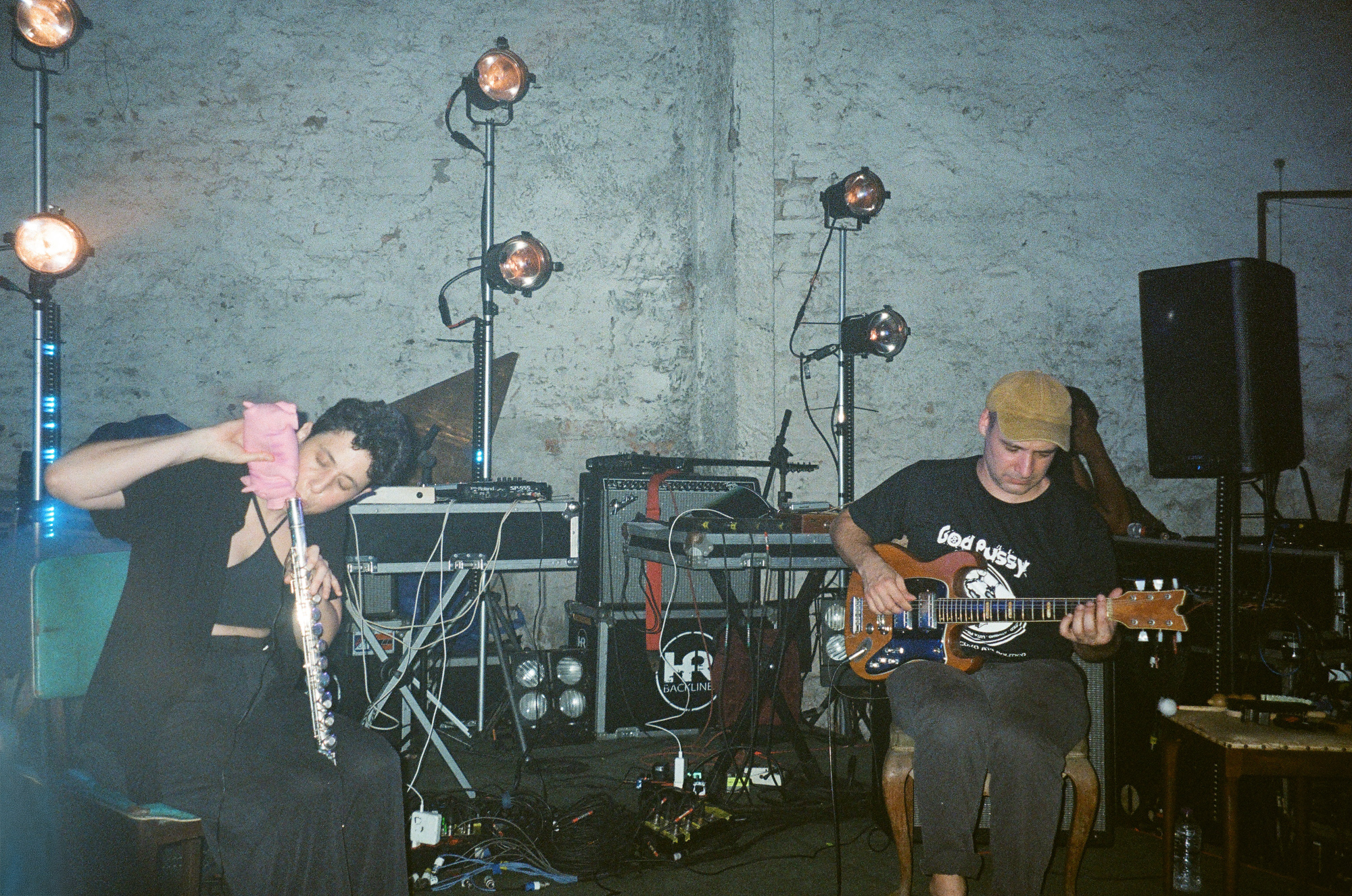
ICNISP (Marina Cyrino and Matthias Koole)
Institute for Certified Nomadic Illicit Sonic Practices (ICNISP) is the Berlin-based duo of Brazilian musicians Marina Cyrino (flute) and Matthias Koole (electric guitar), formed in 2018. With a mixture of electronic and acoustic sound sources, objects and preparations, internal amplification and no-input mixing, the duo presents a lively and highly imaginative approach to their instruments.
The amplified piccolo can function as a noise generator and a percussion instrument; the alto flute can be played by an external balloon that moans; the guitar quickly switches between sound worlds in chaotic mutations of instrumental techniques and no-input mixing. The duo works across improvisation and multidisciplinary projects. In 2023 they released their first album Calisthenics on the Brazilian label Seminal Records.
Photo: Ivi Maiga Bugrimenko

Pasacalle by Lorena Izquierdo, with Liz Allbee, Ilaria Orlandini, Andres Navarro
PASACALLE, psychogeography of walking
Pasacalle is a Spanish term that literally means ‘to pass, to walk along the street’, a kind of popular, cheerful, secular procession, performed by strolling musicians who walk along the streets playing and around whom people dance. Its interest is above all social, this dance can be danced by anyone who joins in, therefore, it also serves to show and strengthen the integration of a group.
In PASACALLE, psychogeography of walking we include instruments that will be able to circulate in the street and those who cannot will be transported with carts or carriages. The intention is that the whole public will follow them and intervene.
The performance will make site-specific interventions with urban material, time and space, with objects or sound actions, all of them from a psychogeographic perspective—that is to say, potential public space possibilities to amplify the vision of space and time and to question automatism in cities and create a space for flexion and fun.
Photo: unknown
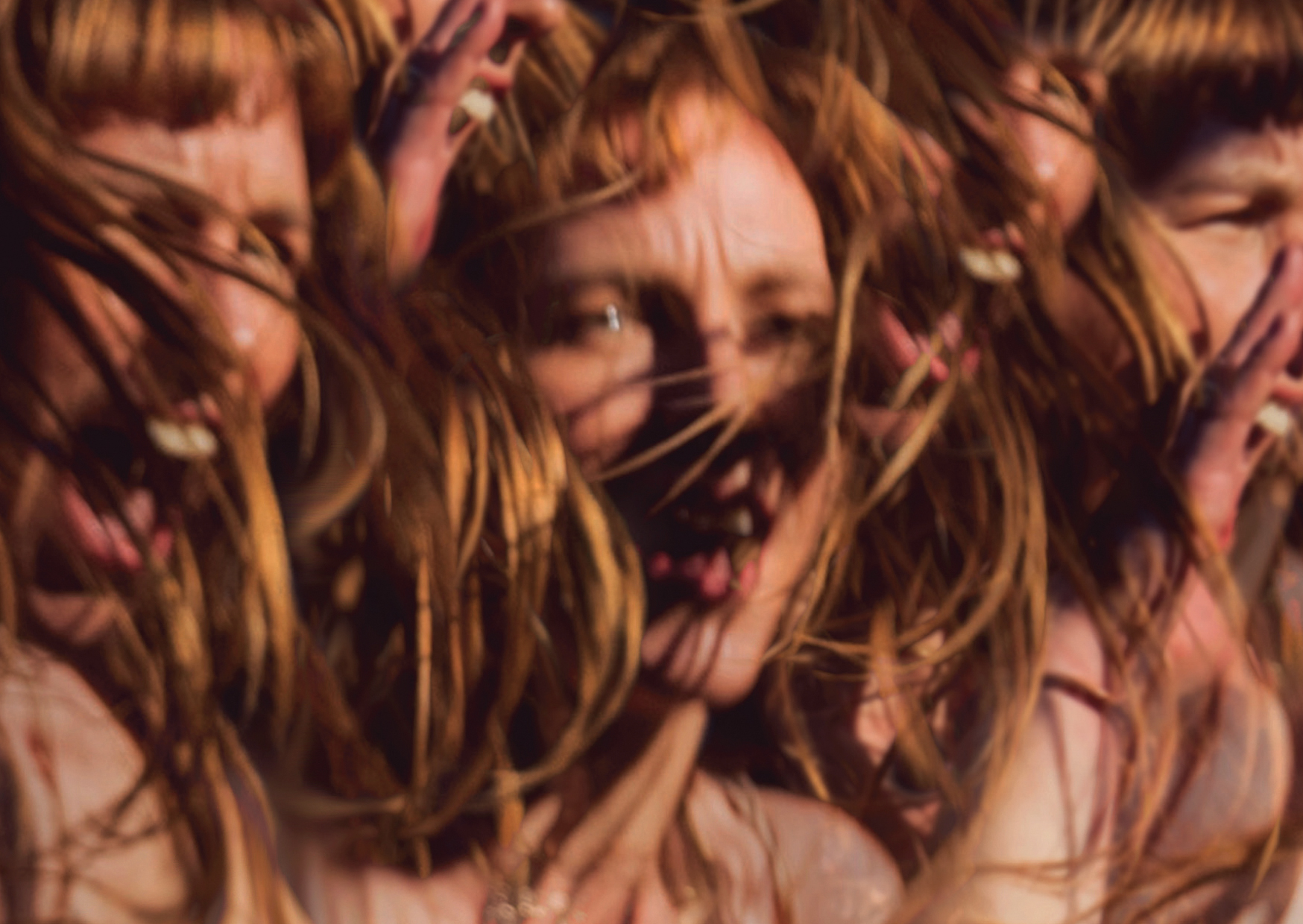
Janneke van der Putten
Cycles: Overtones and Glottis Attack
Janneke is skilled in acoustic techniques and in situ listening. Besides training in North-Indian Dhrupad singing, she specialises in extended vocal techniques. Performing without electrical amplification, she uses space as an instrument, merging primal voices and minimal drones in microtonal dynamics. Her performances create immersive, physical, spatial experiences.
Photo: Margarita Milova
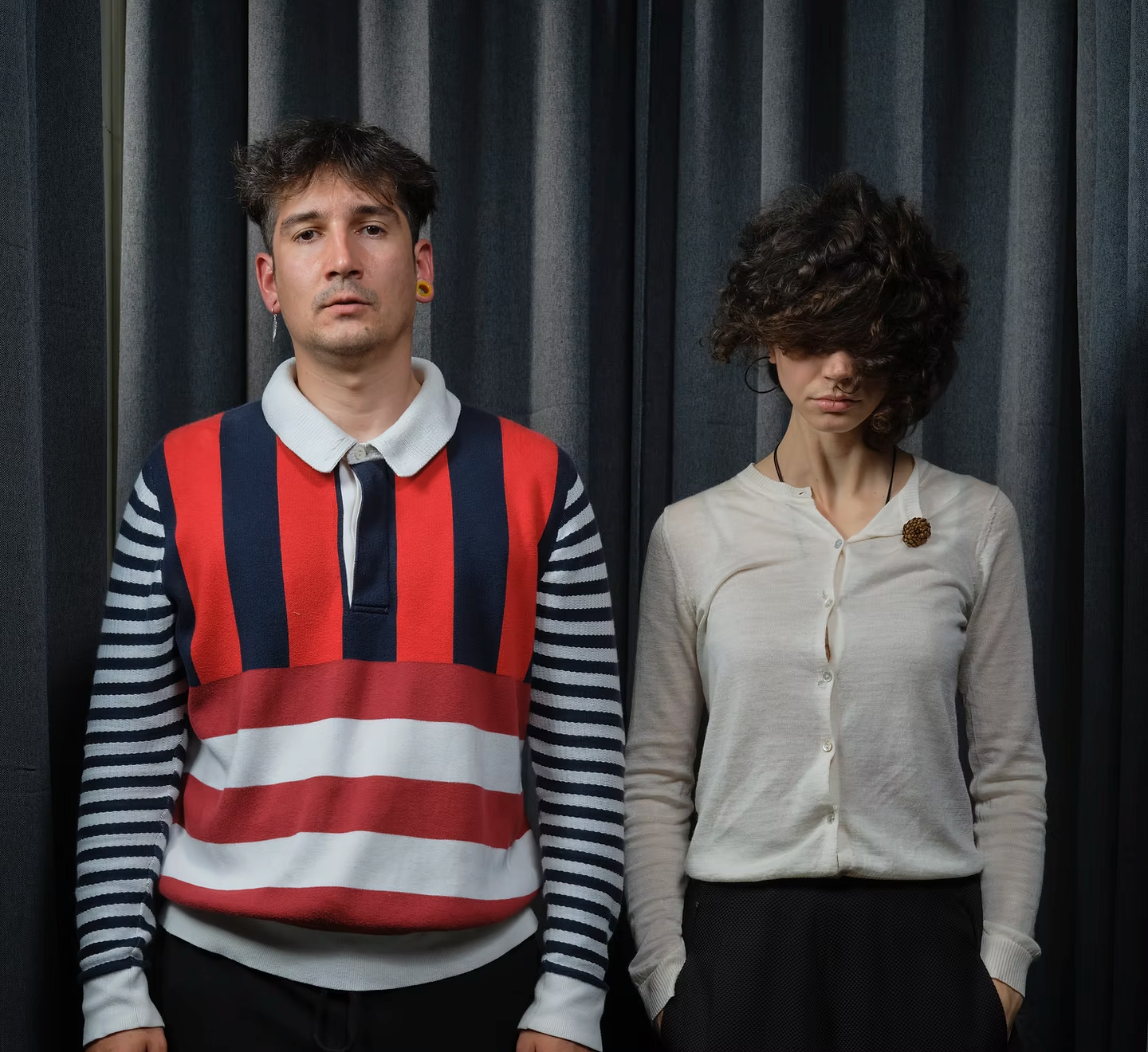
Dust Bunny (Marta Warelis / Nasim Lopez-Palcios Navarro)
Marta Warelis – synth, organ
Nasim Lopez-Palcios Navarro – drums, electronics
This dynamic duo creates a haunting landscape between progressive rock/noise and free jazz using drums, electronics, analogue synthesizer and organ. Like the fire, the music takes us to that border of passage where things transform in restless dance.
Photo: Erik Smits
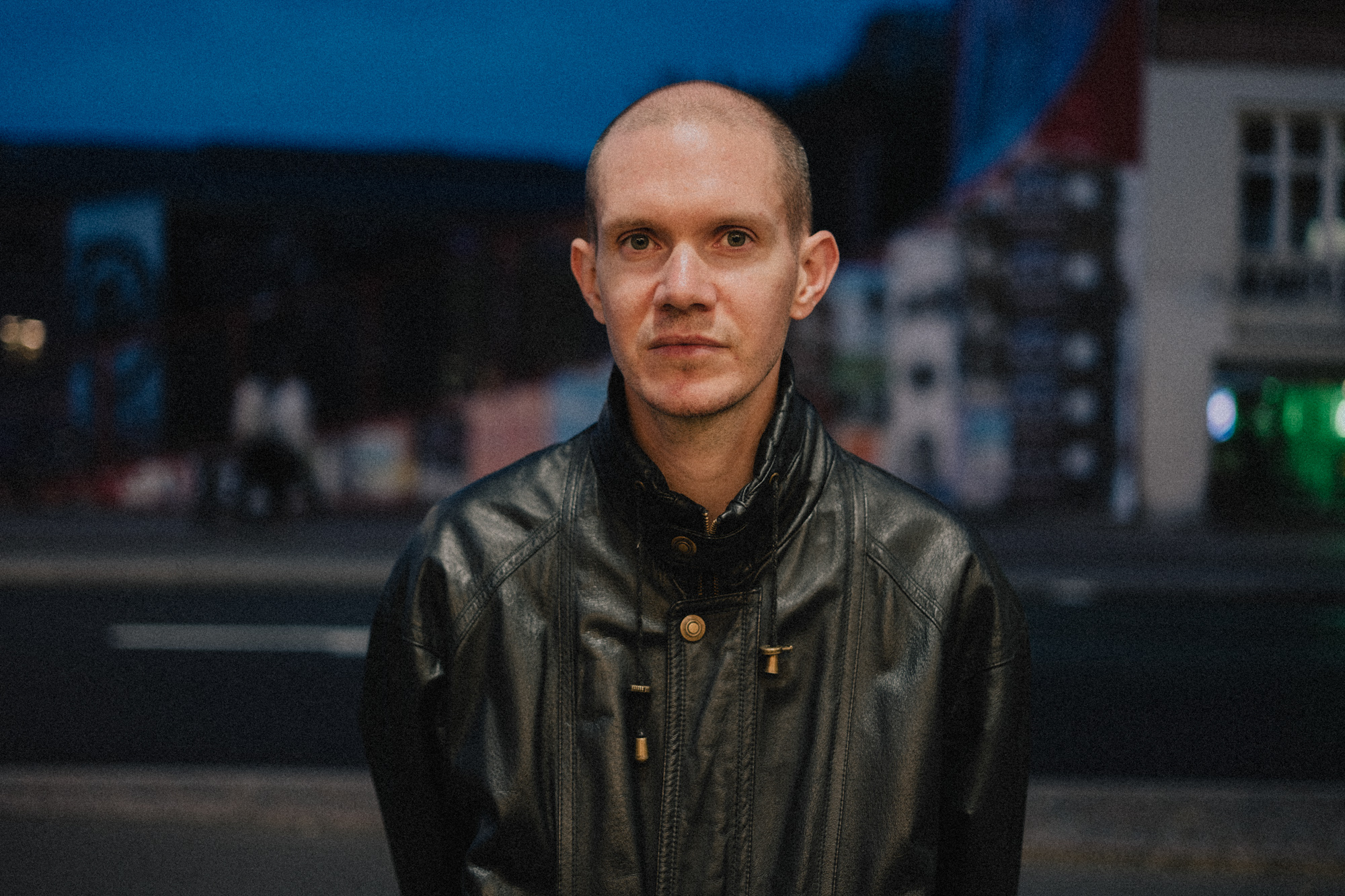
Anders Vestergaard
About the project:
This solo project was initiated almost ten years ago when I began integrating repetitive drumming in my Qi Qong practice to form a private ritual in which I could heal and balance myself.
It was a strategy for a specific way of moving my body rather than to make specific sounds, but as it evolved I started liking the sound, and began working with it as a music project.
Now I work with the solo performance as a way to transcend certain modes of being, to assert our physical existence and as a somewhat cathartic way to connect with people in a room.
Photo: Mathias Kristensen

Johannes Bergmark
I have been in you, you have been in me
I swallow a contact mike (covered in silicon glue), and the audience hears my stomach devour different things (carbonized drink, popper candy etc), my heartbeat and my breathing (agitated by physical work) as they sound from inside the stomach.
The Stringed Stirrups (formerly called the Angel Strings) is literally walking on a vertical tightrope. I am playing two piano strings that are suspended from the ceiling, with me hanging in the lower end. The strings go through loops on a resonator (like the Butter Bass) that is tied around my chest. I give tension to the strings with my weight between the feet that stand in stirrups attached in the lower end of the strings. It is played with two bows and specially made wooden beaters. Sometimes the longitudinal vibrations of the strings are excited. It is amplified with a contact microphone.
Photo: unknown
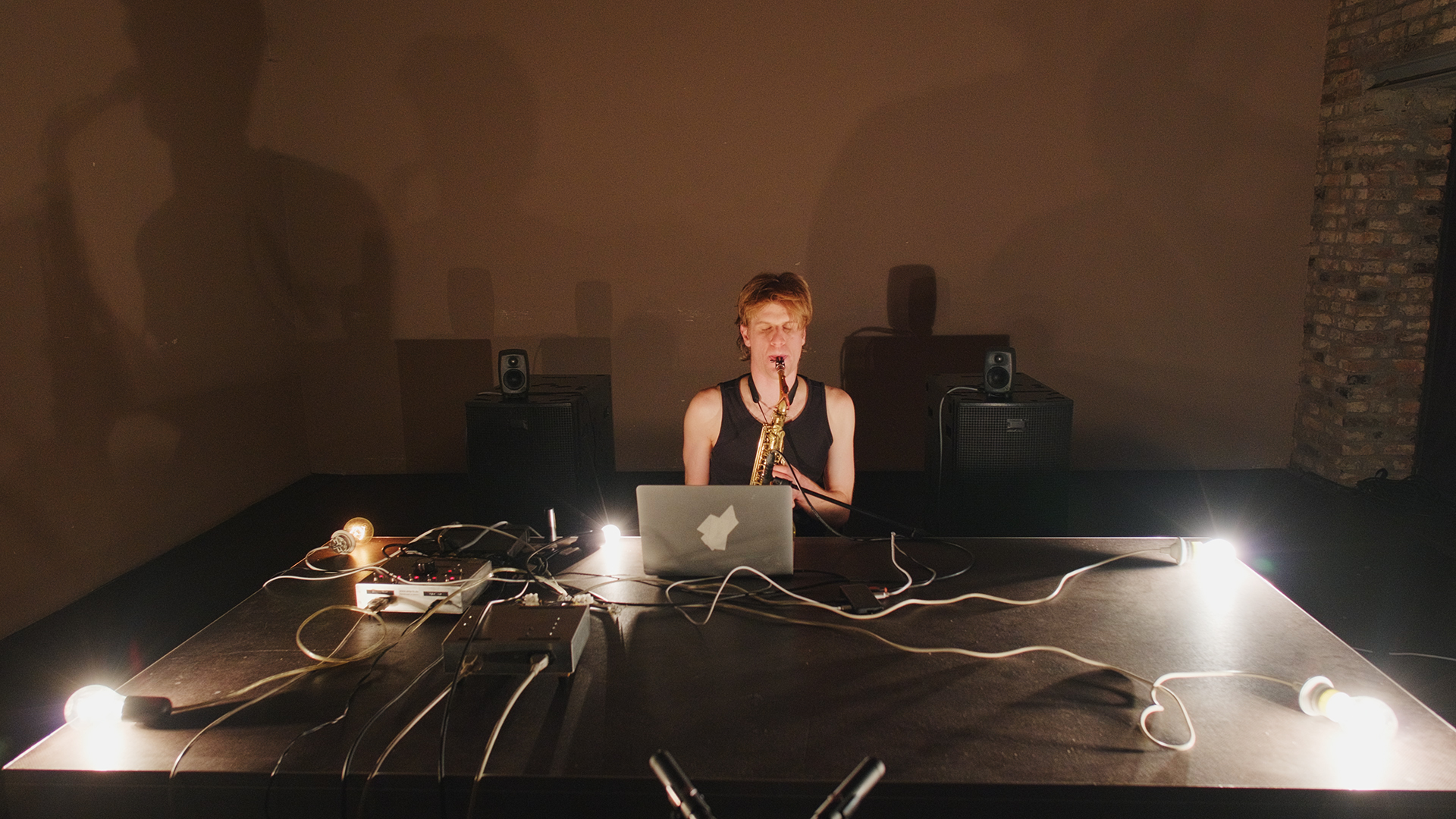
Irrational Rhythms and Shifting Poles by Chris Pitsiokos
Irrational Rhythms and Shifting Poles is an ever-expanding and -evolving solo project for saxophone, laptop, and four speakers. The system involves the spatialization of sound determined by a sequencer built according to rhythms generated by irrational (that is, non-fractional) rhythms. The piece also deals with polarity shifting, an acoustic phenomenon related to, but not synonymous with, phase shifting.
Other concerns of the project are difference-tones, psychoacoustic phenomena, and subjective hearing; i.e. the sounds change drastically depending on where you are in the room or which way your head is turned.
Photo: Carina Khorkhordina

Hydrahelia (Azumi Oe / Tim Dahl)
Hydrahelia is an experimental music-dance duo based in New York City comprised of Tim Dahl and Azumi OE. Both renowned for their boundary-pushing work in each of their fields, they first came together in 2020 for a performance at Ideal Glass in the East Village which set the stage for an electric ongoing collaborative practice.
Azumi, born in Kyoto, Japan, trained in Butoh from a young age, uses costume, lights and dance to explore themes of repression and taboo, often testing both herself and her audience in visceral performances that challenge her body and its limits. Tim Dahl, born in Chicago, Illinois, uses vocals, bass and processed microphone to elicit a unique sonic world developed over 30 years. Known for his abrasive yet delicate tones, he has toured with artists as diverse as Lydia Lunch, Child Abuse and Yusef Lateef, and also performs solo, radically bleeding definitions around instrumentation and genre.
Together Dahl and OE have created a thrilling act that challenges conventions around music and performance today.
Photo: unknown
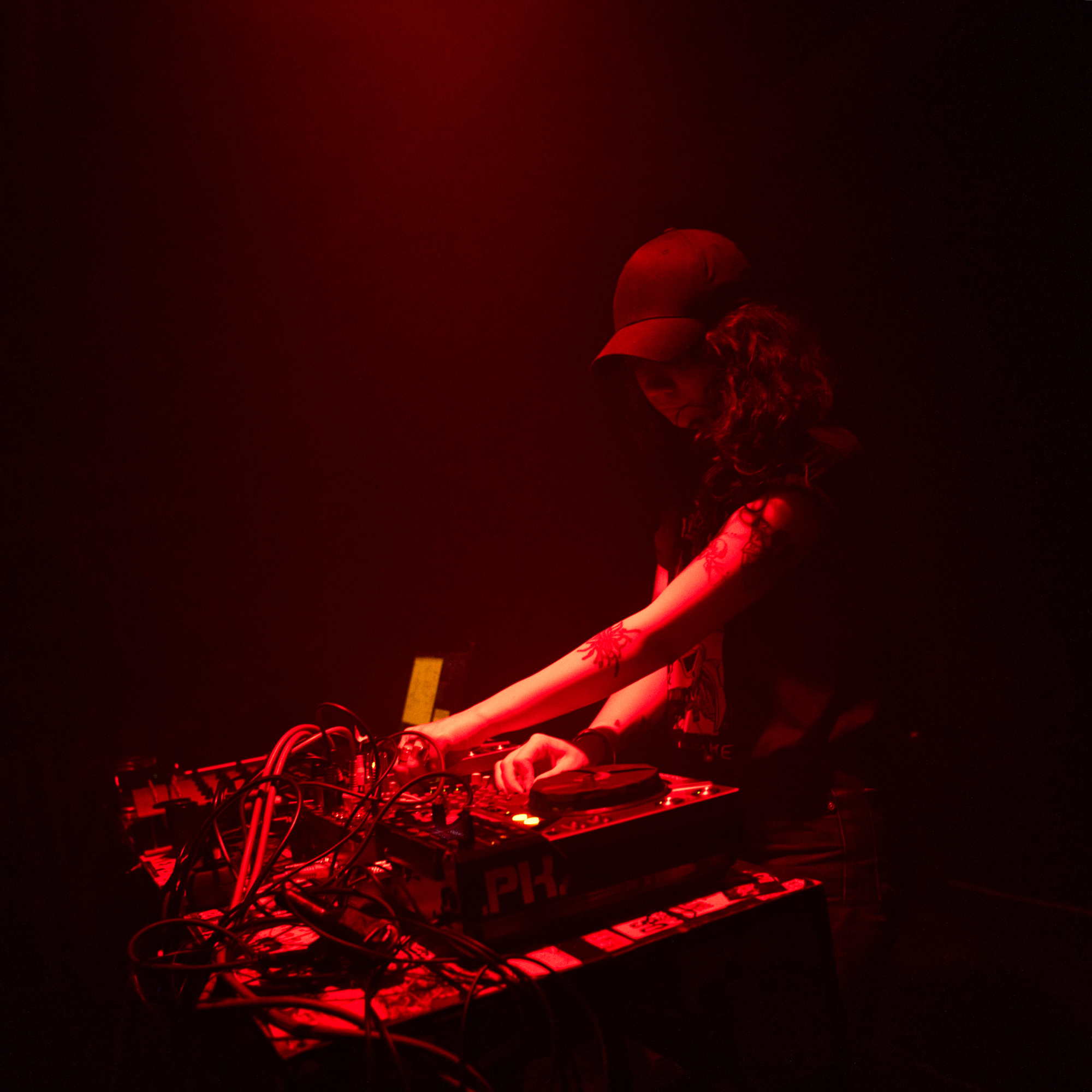
.PK.
İpek Odabaşı is an Istanbul-born, Berlin-based noise artist, experimental DJ and curator. Her music explores extreme sounds, tight and distorted beats, and challenges traditional listening experiences. She works across various fields of sound, continuously experimenting with electronic music.
Photo: Isak Han